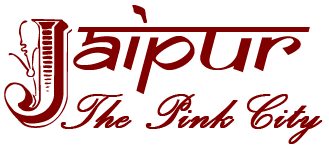
Jaipur Travel Guide
Jaipur Heritage Monuments : Albert Hall Museum
 |
Jaipur Travel Guide Jaipur Heritage Monuments : Albert Hall Museum |
|
Book Cheap Flights, Hotels |
|
|
|
|
|
Holidays >> Travel >> Things to do >> India >> Rajasthan >> Jaipur >> Heritage >> Monuments >> Albert Hall Museum Albert Hall Museum : An Industrial Art and Craft MuseumMuseum, Art, Science, Art Gallery, Art Museum, History Museum, Albert Hall Museum, Arts and Crafts Museum, Monuments in Jaipur, Hot spots for Jaipur Heritage Tour, Special Attractions in Jaipur Tour, Hotels, Cheap Flights, Holidays, Travel, Vacations, Trip Advisor, Things to do, India, Travel Agency, Air Tickets, Heritage, Jaipur, Travel Planner, Monuments, Rajasthan, Car Rentals, All Inclusive PackagesAlbert Hall Museum : Pottery Collection Room 2Painted and decorated pottery can be classified into glazed and unglazed ware. The glazed ware is normally made by a group of hereditary potters known as kashigars and the unglazed ware is made by the Kumhars.
The unglazed decorated ware is unusual in its deft use of material to achieve unique surface finishes and fine delicate workmanship as on: Bangal bidri from the East with its characteristic silver inlay and glossy black unglazed surface, Bahawalpur Kagazi from north Punjab with its apricot colored mica glossed surface and intricate cutwork to the Pattan Kagazi from the West, known for its paper thin fragility and soft use of unusual colors from natural earths. The glazed pottery examples are special in their distinct regional characteristics; however all use the low temperature glazes based on borax and lead on a red clay base. Each glazed pot highly decorated with floral patterns and bands of creepers or geometrical cartouches with natural forms in slips and then put under a transparent glaze. There are no examples in this group of a high temperature glaze and clay. From the North, Khurja s specialty are white and blue raised painting on a red ground, and Jalandhar's is known for its green copper glaze, petal modeling and multicolored tile work. Burhanpur in the Deccan was known for its white painted decoration on a dark red base. The oldest glazed traditions in the subcontinent are from Hala in Sindh where the roots lie in glazed architectural tiles and cornices. The Bombay School of Art was the second Art School to begin training in pottery. It was inspired by the techniques and potters of Hala and introduced them at the School in the 1860 s and also attempted to change, interpret and integrate it into its new aesthetic. The discovery of the Buddhist paintings in the caves at Ajanta and the detailed studies made of them by students and teachers of the school were reflected in the changed ornamentation on the pottery which moved from the floral to the figurative- from the abstract to the narrative. Bengal Bidri WareThe technique of silver inlay in metal called Bidri was begun in the town of Bidar near Hyderabad in Andhra Pradesh. However, the clay tradition of silver inlay was a parallel style that evolved in Nizamabad and Azamgarh in Uttar Pradesh and in parts of Bengal. A large collection of beautiful Bengal Bidri Ware is in display of Albert Hall Museum's Pottery Section at Pink City Jaipur.
Khurja Bulundshahar Ware
|
|
Choose Best Travel Plan Our Trip Advisor and Travel Planner will analyze your requirements and will help build your travel itinerary and provide suggestions. It will SAVE your TIME and MONEY. |
|
|
|
|
Albert Hall Museum Page 1 | 2 | 3 | 4 | 5 | 6 | 7 | 8 | 9 | 10 | 11
Book Train Tickets